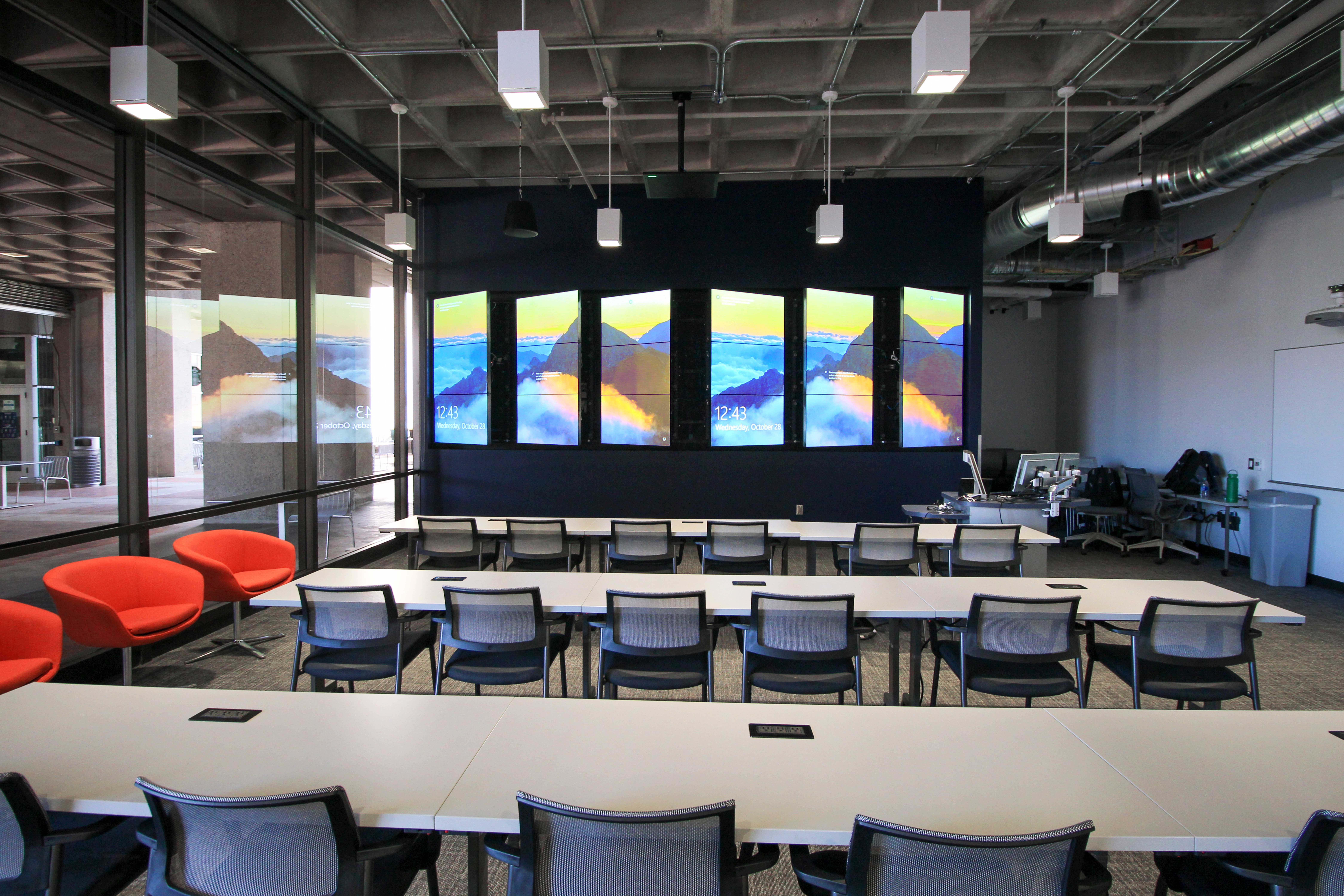
Designing the Modern Classroom: Interactive Displays, Lecture Capture, and Engagement Tech
The room is dim. A professor in her mid-forties scans a sea of blank faces through her webcam feed, waiting for someone, anyone, to speak. On the in-room screen, a slide flickers, but half the class’s faces are dark squares with muted microphones.
She toggles the camera, adjusts the mic, checks that her lecture capture is recording, yet in her gut she already knows: many students will skip watching, participation will lag, and she’ll never know why.
That same evening, in a conference room on campus, the CIO reviews budget requests for interactive displays, auto-tracking cameras, and lecture capture upgrades. How can this kind of spend be justified to trustees? The decision feels caught between idealism—better learning, equity, retention—and pragmatism—ROI, utilization metrics, technical risk.
Whether you’re leading a pilot, influencing the decision path, or holding the purse strings, you know this tension too well. The promise of the modern classroom is compelling, but making the leap requires more than new equipment. It takes a blueprint that connects engagement, evidence, and economics.
In this post, we’ll explore how to design a modern learning space with interactive displays, lecture capture, and engagement technology that feels grounded and defensible to CIOs, IT Directors, and faculty alike.
Rethinking Classroom Technology: Engagement Meets ROI
Higher education leaders face competing priorities: improving student outcomes while demonstrating measurable return on investment. Interactive classroom technology can bridge that divide when implemented strategically. Instead of treating technology as a one-time capital expense, forward-thinking institutions are reframing it as an operational investment that drives engagement, retention, and teaching innovation.
Interactive displays and engagement platforms transform static lectures into collaborative experiences. Studies show that students in technology-enhanced classrooms are 1.5 times more likely to participate and retain material. Combined with lecture capture solutions, institutions not only support hybrid learning but also create scalable content libraries for future courses and research.
The key is standardization and usability. The best classroom AV designs are intuitive enough that professors can walk in, tap once, and teach. No extra IT support. No downtime. Just consistent performance across every room.
Building the Case: How to Justify Modern Classroom Investments
CIOs and IT Directors are under pressure to prove value on every dollar spent. The most successful AV integration projects begin with data-driven ROI modeling.
-
Utilization analytics: Centralized monitoring tools track room usage and system uptime, allowing IT teams to optimize space and justify future funding.
-
Faculty adoption metrics: When training and ease of use are prioritized, adoption rates soar, and so does ROI.
-
Student outcomes: Institutions that integrate engagement technology report higher attendance and retention rates. These results speak directly to board-level priorities.
When presenting to leadership or procurement teams, position AV integration in higher education as an investment in scalability. Technology that reduces faculty frustration, streamlines IT support, and enhances learning outcomes pays dividends well beyond the initial installation.
From Pilot to Campus Standard: Lessons from Leading Institutions
Many universities begin with pilot programs, such as a single lecture hall or a few interactive classrooms, to validate technology performance and adoption. The institutions that see long-term success approach these pilots as opportunities to gather data. They track engagement, usage, and instructor feedback, then use that information to standardize across departments.
The result is a consistent modern classroom design that supports every discipline, from STEM labs to liberal arts lecture halls. When faculty can rely on identical setups across campus, IT departments reduce troubleshooting time, and students enjoy a seamless experience in every room.
Modernization also extends the lifecycle of the investment. Networked AV systems allow for remote monitoring, updates, and analytics, ensuring that your technology continues to deliver value for years after deployment.
Partnering for Success: Why Integration Expertise Matters
The success of any higher education AV initiative depends as much on partnership as it does on products. A consultative AV integration partner helps translate vision into reality by bridging the gap between instructional needs, IT infrastructure, and financial constraints.
The right partner will:
-
Align classroom design with pedagogical goals.
-
Provide scalable lecture capture and interactive display solutions.
-
Integrate with existing IT ecosystems and LMS platforms.
-
Deliver data-backed ROI insights for budget justification.
From discovery to deployment, this consultative approach turns technology into a strategic asset rather than a cost center.
The Classroom of the Future Starts Now
Imagine walking into a classroom that automatically adapts to each instructor and student. The lights, microphones, capture system, and interactive display all sync seamlessly. No cables. No complexity. Just teaching, learning, and engagement elevated by design.
That vision isn’t years away. It’s already happening in institutions that approach AV modernization strategically, with a focus on ROI, usability, and the student experience.
If your institution is ready to evolve its learning environments, our team can help. Connect with us today to explore how we design modern classrooms that inspire engagement, improve outcomes, and deliver measurable value.

